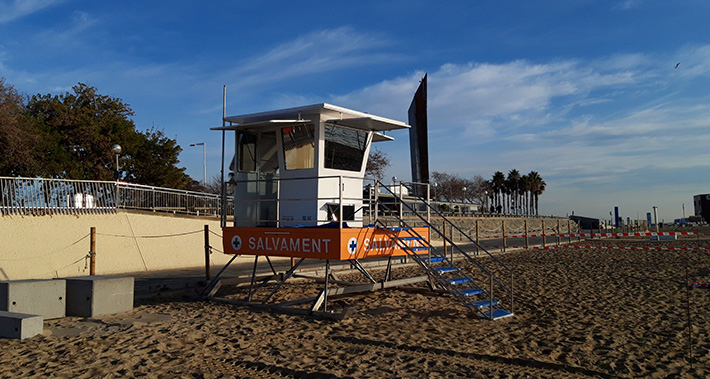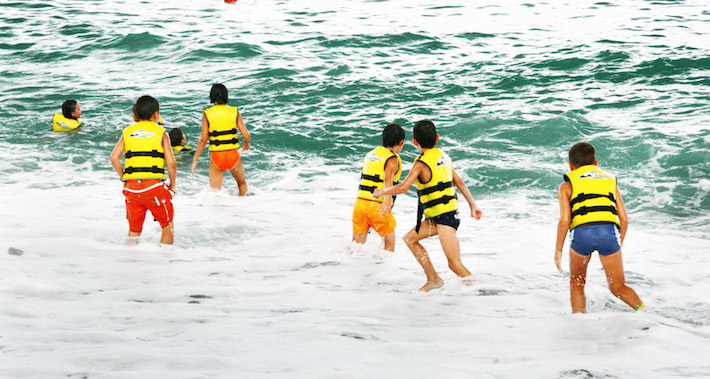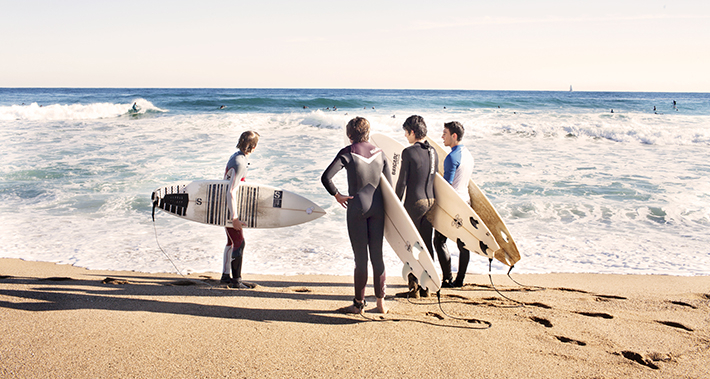Bathing safely



Look up recommendations and good practices to enjoy the beaches and bathe safely.
1. The best bathing is safe bathing. Always respect the beach warning flags.
2. If you follow the lifeguards' advice, you are sure to have a great time on the beach.
3. Always swim parallel to the breakers and not far from the beach.
4. If you can't swim or don't feel confident enough to swim, always bathe near a lifeguard, warn them before entering the water and try not going in deeper than your waist.
5. Do not swim beyond the area marked by yellow buoys. Avoid swimming near breakwaters or in harbour waters.
6. It is forbidden to walk on the breakwaters, fish from them or climb up on them to dive back into the water.
7. If you have any problems, let the lifeguard or the person closest to you know by raising your hand and audibly calling for help. Try to keep calm while waiting for help to come. If you have something to help keep you afloat, use it and don't let go.
8. Beware of currents when bathing. The presence of currents is indicated by the colour of the warning flag. Avoid breakwaters and follow the lifeguards' advice. If you are caught in a current, never fight it. Stay afloat and call for help.
9. Never pretend to be in difficulties. Remember that when you call for help this activates the rescue service, and you could be preventing the lifeguards from helping someone who is really in trouble.
10. If you notice jellyfish, take the necessary precautions. Don't swim near them, don't touch them or try to remove them from the water. In fact, it is best not to swim at all. Never let children play with jellyfish and if stung, ask the lifeguard for help.
11. If there are rocks on the seabed near the beach, take note of the signs and do not dive. A good way to avoid getting hurt is to look into the water before entering it.
12. Recreational surface fishing is allowed in the area established for this on La Barceloneta beach, from 7 pm to 9 pm, and on all the beaches from 9 pm to 10 am.
13. It is best not to consume alcohol on the beach because it slows down the reflexes. If you do, you are advised not to swim or at least to freshen up in the shower before entering the water.
Jellyfish
Jellyfish are marine animals that live in open water. They swim very slowly and are swept toward the coast by the currents in spring and summer.
If you touch a jellyfish, even if it is dead, it can inject a substance into your skin that produces a burning sensation. Contact with the tentacles or parts of them, both in the water and on the sand, can cause injury.
Bathe safely
Beware of currents when bathing. The presence of currents is indicated by the colour of the warning flag. Avoid breakwaters and follow the lifeguards' advice. If you are caught in a current, never fight it. Stay afloat and call for help.
